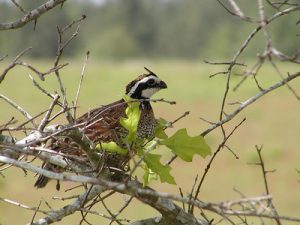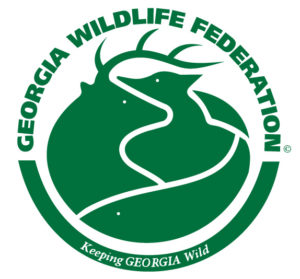 My love of the outdoors stems from early morning walks into the woods with my dad as we went to hunt. As I grew older, I would listen to my grandfather and dad talk for hours about the prince of game birds, the bobwhite quail.
My love of the outdoors stems from early morning walks into the woods with my dad as we went to hunt. As I grew older, I would listen to my grandfather and dad talk for hours about the prince of game birds, the bobwhite quail.
But even in the 1970s, the familiar “bob-WHITE?” whistle was growing more and more rare. It’s one of the reasons I work in conservation—I want my grandkids to know the thrill of a bobwhite call at evening time, and I selfishly want to keep experiencing that thrill for myself.
You can still hear bobwhites today, but you need a bit of luck. Bobwhite numbers in Georgia have plummeted by 85 percent since the 1960s from the loss of hedgerows, brush, native grasses, and open pine forests. The Georgia Department of Natural Resources’s Bobwhite Quail Initiative is making progress, but could do much more with consistent funding.
Time is short. Bobwhites join eastern meadowlarks, red-winged blackbirds, and other once common birds that are declining rapidly. In fact, our nation has a third fewer birds today than 50 years ago—a loss of three billion individual birds. And it is not just birds — one-third of our wildlife species are already at an increased risk of extinction.
In the midst of this crisis, I’m still optimistic. Here’s why. The bipartisan Recovering America’s Wildlife Act, H.R. 3742, is moving its way through Congress with 150-some cosponsors and counting. I’m proud of the Republicans and Democrats who have put aside gridlock in Congress to support the biggest investment in conservation in decades.
Three cosponsors are from Georgia — Reps. Buddy Carter, Hank Johnson, and Austin Scott. Next up? I would love to see others from the Georgia delegation support this bill, particularly Rep. Jody Hice (R-GA-10) who sits on the House Natural Resources Committee. His support could help move this bill that’s good for wildlife, good for business, and good for taxpayers.
The Recovering America’s Wildlife Act will solve a fundamental problem every state faces. There’s no dedicated funding stream to conserve at-risk wildlife, even as the crisis worsens. For years, hunters and anglers have shouldered about 80 percent of the costs of wildlife conservation through license fees and excise taxes on equipment. This consistent funding led to the return of waterfowl, wild turkey, and white-tailed deer. We’ve done it before and we can do it again.
The bill will provide $1.3 billion annually to the state wildlife agencies, which would mean nearly $28 million annually for the Georgia Department of Natural Resources. The agency already has a plan in place to restore 639 species—349 animals and 290 plants. It is far cheaper to act before species are endangered than to wait until they need the “emergency room” protections of the Endangered Species Act.
When we restore bobwhite habitat, we improve soils, prevent erosion, and create homes for pollinators that in turn help local farmers grow the food that feeds us. When we take action for fish species in trouble, we improve water quality and drinking water. The funding also invests in our growing outdoor recreation economy, protecting wild places and creating trails to us all see and enjoy wildlife.
What I like the most about the bill? I think of hunting with my dad and the bobwhites calling. I never want our woods and fields to fall silent. If we all work together, we will see and hear coveys of quail bursting from meadows and pines—and so will future generations.
By Mike Worley
President & CEO
Georgia Wildlife Federation
Op-Ed pdf: https://gwf.org/wp-content/uploads/2019/11/RAWAOp-Ed.pdf

Recent Comments